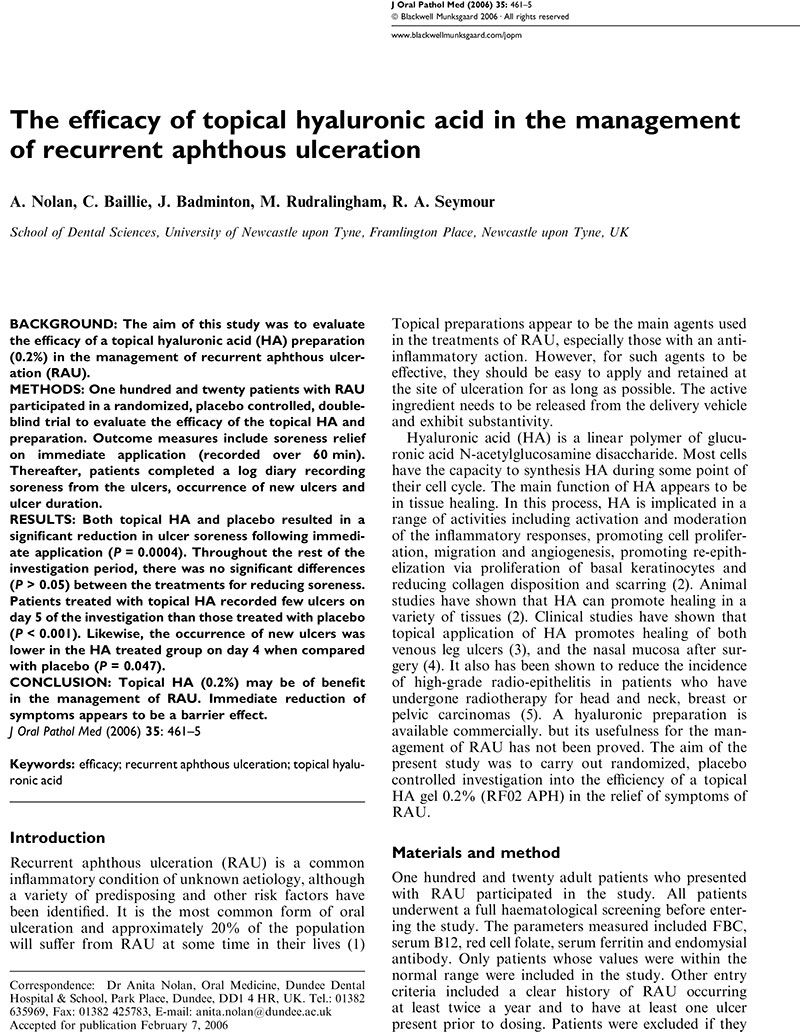topical hyaluronic acid in the management of recurrent aphthous ulceration

The efficacy of topical hyaluronic acid in the management of recurrent aphthous ulceration.
Article specifications
This randomized, placebo controlled, double-blind trial was published in 2006 in Journal of Oral Pathology & Medicine (IF 2016: 2.063) by British specialists. The aim of this study was to evaluate the efficacy of a topical hyaluronic acid (HA) preparation (0.2%) in the management of recurrent aphthous ulceration (RAU). 120 patients with RAU participated in this study. Eligible patients had to present with discomfort arising from an ulcer. For these patients a topical application of HA gel 0.2% or identical placebo was applied by a Clinician to the ulcerated area. Following first dosing, patients were retained in the clinic and asked to record on 100 mm visual analogue scales (VAS) the discomfort arising from the ulcerated area. Recordings were made at baseline (before gel application) and at 5, 10, 15, 20, 30, 45, 60, 120, 180 and 240 min after dosing. The first 60 min of the recording were supervised and the remaining observations were carried out on a log diary provided to the patients on discharge. On completion of the first 60 min, patients were given a sufficient supply of gel to apply two to three times per day for the next 7 days. Patients were instructed to apply the gel after breakfast and after their evening meal and at one other time if desired. Further discomfort recordings were made 1 h after application for 7 days. In addition to recording discomfort, patients were also asked to record number of ulcers present in their mouth and the occurrence of any new ulcers during the treatment period. Outcome measures include soreness relief on immediate application (recorded over 60 min). Thereafter, patients completed a log diary recording soreness from the ulcers, occurrence of new ulcers and ulcer duration. All patients underwent a full haematological screening before entering the study. Only patients whose values were within the normal range were included in the study.
Results
Topical HA (0.2%) may be of benefit in the management of RAU. Immediate reduction of symptoms appears to be a barrier effect. Both topical HA and placebo resulted in a significant reduction in ulcer soreness following immediate application. Throughout the rest of the investigation period, there was no significant differences between the treatments for reducing soreness. Patients treated with topical HA recorded few ulcers on day 5 of the investigation than those treated with placebo. Likewise, the occurrence of new ulcers was lower in the HA treated group on day 4 when compared with placebo
